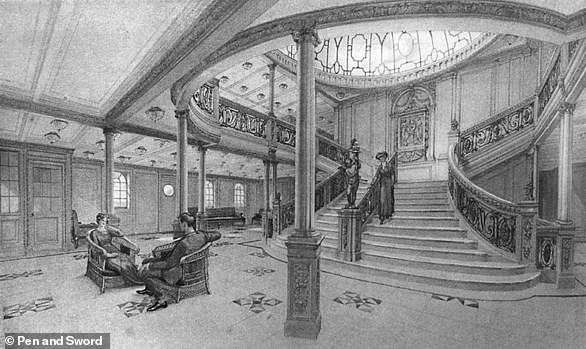They were the heroes of the Titanic disaster, the men who sacrificed themselves to save hundreds of lives.
It had long been believed that the engineering crew on board the doomed vessel continued working right up until its final moments.
But now, new analysis of a full-sized digital scan of the Titanic’s wreck in the Atlantic proves the heroics of the men led by chief engineer Joseph Bell.
Images show how a valve on the deck of the stern is an open position, meaning steam was still flowing into the ship’s electricity generating system.
It shows that Bell and his men – all of whom died in the disaster – stayed behind as the to keep its lights on as the ship sank.
Their actions saved many lives by ensuring there was light available as the crew launched lifeboats.
Master mariner Captain Chris Hearne, who was involved in the new research, told the Telegraph: ‘They provided the life to ship, the lighting, the heating, and running the pumps.
‘You could see this steam valve is clearly open… This action saved hundreds of lives.’
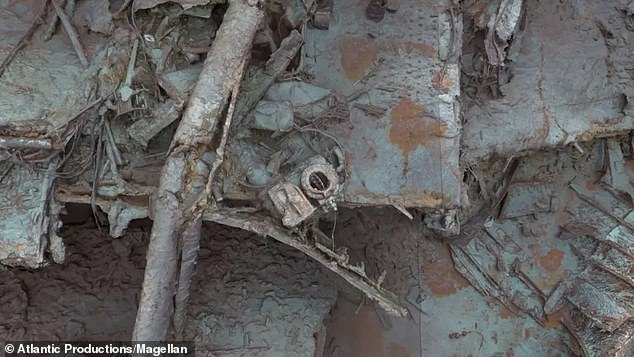
New analysis of a full-sized digital scan of the Titanic’s wreck in the Atlantic proves the heroics of the men led by chief engineer Joseph Bell. Images show how a valve on the deck of the stern is an open position
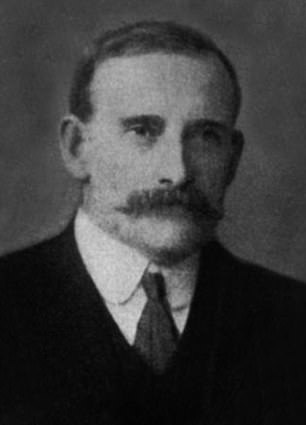

Joseph Bell, the Titanic’s chief engineer, was portrayed by British actor Terry Forrestal in James Cameron’s 1998 film
His view was echoed by Titanic expert Parks Stephenson, who told the BBC: ‘They held the chaos at bay as long as possible, and all of that was kind of symbolised by this open steam valve just sitting there on the stern.’
The valve visible in the images was part of a line taking steam from the boiler room to the emergency dynamos.
The Titanic was on its maiden voyage from Southampton to New York when it hit an iceberg at just before midnight on April 14, 1912.
The ship sank within three hours with the loss of more than 1,500 passengers and crew.
The 3D reconstruction of the ship was made by deep-sea mapping company Magellan Ltd.
They released initial images two years ago after sending submersibles to survey all parts of the wreck.
The new evidence pointing to the heroics of the engineers tallies with contemporary reports at the time.
The Daily Mail reported on April 30, 1912: ‘Oiler A. Whyte states that shortly after the accident the emergency dynamos were started to run the electric light in case the engine-room should be flooded.’
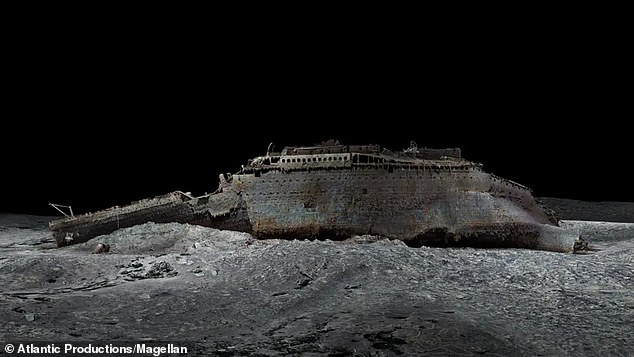
Experts at deep-sea mapping company Magellan Ltd snapped the wrecked luxury liner from new angles about 12,500 feet below ocean surface. Pictured, the bow (front of the ship)
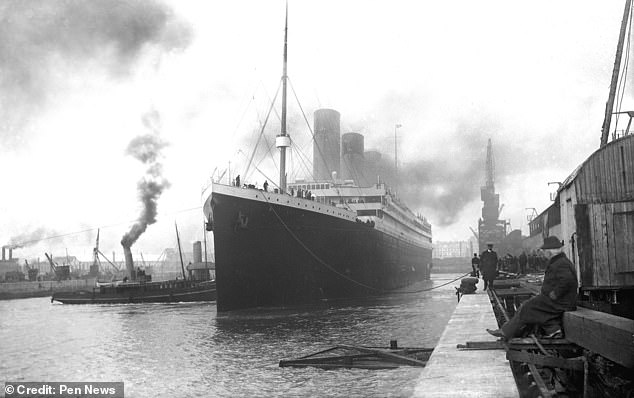
The Titanic hit an iceberg in the Atlantic ocean on April 14, 1912


The report in the Daily Mail on April 30, 1912, telling how the engineers and stokers kept working
Witnesses told how Bell refused space on a raft over fears it might capsize. He was reported to have said: ‘I’ll be all right and find something else. Good-bye, men, God bless you.’
Bell was portrayed in James Cameron’s 1998 epic film by British actor and stuntman Terry Forrestal, who died in a BASE jumping accident in the year 2000.
A memorial dedicated to the engineers was put up in Southampton’s East Park in 1914.
The bronze and granite structure features a statue of the Greek goddess Nike and a tribute that begins with a much-quoted verse from the Bible’s Gospel of John.
It reads: ‘Greater love hath no man than this, that a man lay down his life for his friends.’
The tribute then continues: ‘To the memory of the engineer officers of the R.M.S. “Titanic” who showed their high conception of duty and their heroism by remaining at their posts 15 April 1912.
‘Erected by their fellow engineers and friends throughout the world.’
Bell headed up a team of 25 engineers, six electrical engineers, two boiler makers, a plumber and a clerk. All were killed in the disaster.


